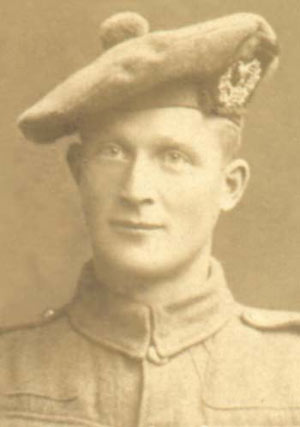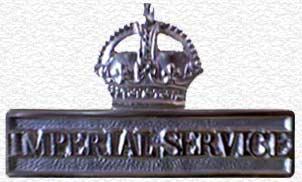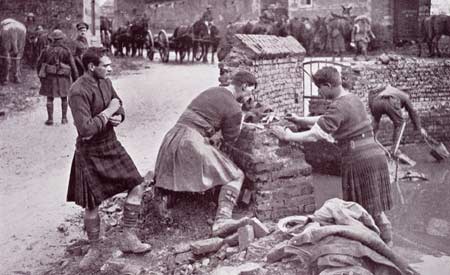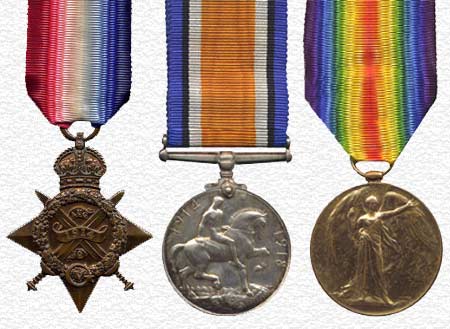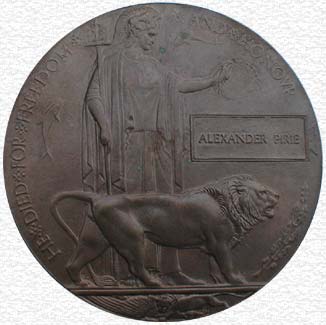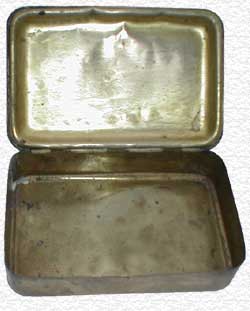|
Pte
Alexander Pirie, 6th Batt Gordon Highlanders |
|
Alex Pirie
was born in the Parish of Glass in 1889 the eldest son of Alexander
Pirie and Margaret Barron. His father was a farm servant at Invermarkie
and moved to Kennethmont c 1917-18 when he took the tenancy of the
farm of Braefolds. His father died there in the late 1920's, his mother
subsequently moved into Huntly.
As a member
of 'H' Company, 6th Battalion ( Donside and Banffshire), Gordon Highlanders
(Territorial Force) Alex reported to The Drill Hall in Huntly when
the Battalion were mobilised in the evening of 4th August 1914. His
company marched by road to Keith where all the companies of the 6th
Gordons assembled during 6th-7th August, the men being billeted in
the school and in private houses. Organisation completed they left
Keith by train on 11th August for Perth. On the 16th they moved on
to join The Highland Territorial Brigade in The Highland Division
at Bedford and were billeted in private houses in the Bromham Road
area of the town with their Headquarters in the Girls High School.
For three months they trained and prepared for their eventual move
to the Western Front and on 22nd October were reviewed by the King.
On 9th Nov 1914 the Battalion journeyed to Southampton by train. That
evening at the docks they joined the troopship "Cornishman".
They disembarked at Le Havre, France next morning and marched to No1
Reserve Camp on top of the hill behind the town. On the 13th
began the journey up the line ending at St Omer where the General
Headquarters of the British Army in France was located. For three
weeks they received further training for the trenches while billeted
in nearby Blendecques.
Members of 6 GH cleaning up after a tour in the trenches, the man shaving still wears the drab apron over his kilt. This was worn to camouflage the kilt and to help keep it clean and dry in the muddy trenches.
On Christmas
Day 1914 they witnessed a remarkable event amid the death and destruction
- the unofficial Christmas Truce. The truce eventually extended to
3rd January 1915, when normal hostilities resumed. This special
Order was published by Major-General Capper -
Having survived
more than four years on the Western Front Alex was killed in action
during the German Spring Offensive over the former Somme and Arras
battlefields of 21st - 26th March 1918. Battalion casualties:
killed 43, wounded 170, missing 27.
Two more men from Kennethmont fell in the same area and also have no known grave. James
Leith, Piperwell fell during the initial assault on 21 March.
His name is recorded alongside his Machine Gun Corps comrades on The
Memorial to the Missing at Pozieres. |
|
Alex Pirie was awarded these medals for serving his King and Country
in The Great War. Having served in the France / Flanders theatre between 5th August
and 22nd November 1914 Alexander qualified for the less common 1914
Star (left). It is often referred to as The Mons Star as the majority
if it's recipients were members of The British Expeditionary Force
and involved in the retreat from Mons to the line of entrenched positions
which became The Western Front. The British War Medal (centre) and Victory Medal (right) were
awarded to all personnel.
The Next of Kin Memorial Plaque and Scroll
The Memorial Plaque This circular bronze plaque, 4.75 inches (120mm) in diameter,
was first issued in 1919 to the next of kin of those British and Commonwealth
servicemen and women who lost their lives on active service during
the Great War. Each one was different in that the commemorated individuals
name was embossed in raised letters within a tablet. The design shows Britannia bestowing a laurel wreath on the rectangular
tablet. A lion stands in the foreground, with dolphins above and an
oak branch in the lower right. A lion cub clutching a fallen eagle
in its jaws decorates the exergue. The wording around the circumference
states: HE (or SHE) DIED FOR FREEDOM AND HONOUR. Due to some similarity with the old one pence coin it was commonly known as a Dead Man's or Death Penny. The plaques were despatched in stiff card wrapping enclosed within a white envelope bearing the Royal Arms.
The Memorial Scroll and King's letter. |
